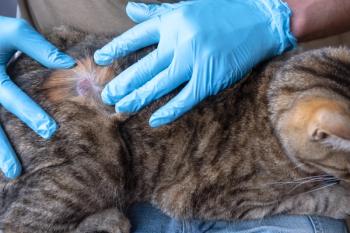
Spiraling Costs to Take Toll
Study groups can negotiate significant benefits from better-known vendors.
NATIONAL REPORT — It was the report heard around the world. Equity and stock markets in the United States and Britain fell May 17 after the U.S. Department of Labor Bureau of Labor Statistics (BLS) reported that consumer prices rose more than expected in April. The Dow Jones Industrial Average fell 1.9 percent to account for the largest daily decline in almost four months.
"What caused the stock market to go down, obviously was the fear of inflation, brought on mostly by energy costs," says Chad Moutray, chief economist for the Office of Advocacy of the U.S. Small Business Administration (SBA).
An already volatile FTSE 100 followed suit with a 3-percent plunk, and the news rippled through Asia and Australia the next day as Japan's Nikkei Average fell 1.35 percent; Seoul's Kospi fell 3.2 percent; Hong Kong's Hang Seng Index shed 2.1 percent, and the Jakarta Composite lost 4.19 percent. In Sydney, the S&P/ASX lost 1.85 percent.
Timing is everything
Global inflation anxieties continued in subsequent days, putting investors on their heels, consumers uncertain and the government poised to continue to raise interest rates. Many analysts say traders are over-reacting to send a message to Federal Reserve Chairman Ben Bernanke — who raised the core interest rate a quarter-point to 5 percent earlier in the month — that raising the rate again in June could slow the economy too much. Higher rates could cool foreign investment, too. It was the 16th-consecutive rate hike since June 2004, and many investors thought the country's head economist would take a break from reigning in consumer spending.
But that is the Fed's No. 1 job, Moutray says, so he doesn't expect them to take their foot off the brake just yet.
"If inflation is not an issue, then they can worry about other things like economic growth. But Bernanke wants to make sure that he is seen as an inflation hawk because the markets don't like inflation," he says. "So they are going to have to continue to raise interest rates to slow down the economy."
Higher rates of inflation might not be a forgone conclusion as of yet. The current environment is "controllable", but the Fed has their work cut out for them as higher energy costs, slower real-estate markets and inflated rents continue to crimp consumer confidence. The economy and small business appear to have weathered pumped-up fossil fuel costs thus far, Moutray says, "but as those prices stay high, you are going to start to see more effects of that."
It might seem like déjà vu from the 1970s, but one major difference is that today's prices are driven by heightened demand instead of shrinking supply. Of course political fallout between Venezuela and Iran, as well as diminished refining capacity in the Gulf of Mexico, have affected supply a bit, but the real price pressures exist due to ravenous U.S. appetites for fuel and burgeoning industrialization and automobile proliferation in developing countries, especially China and India.
DVMs say rising costs are the most pressing concern for veterinary medicine.
"The challenge (to the Fed) is that energy costs are a large chunk of that inflation, and that's demand driven," Moutray says. "And until people change their behaviors or unless you can control the worldwide demand for oil, then it's going to be very difficult for a domestic entity to control a global phenomenon."
The culprit for the most recent commotion was a 0.6 hike in consumer prices in April, which was about 20 percent higher than analysts had hoped. The consumer price index (CPI) is up a cumulative 1.9 percent since January, and at that pace, many expect inflation to top 5 percent for 2006. BLS projects prices to rise 5.1 percent by year end. It was 3.4 percent in 2005, 2.7 percent in 2004 and 2.3 percent in 2003.
That news isn't much comfort, especially since veterinarians already say rising costs are their greatest concern. In DVM Newsmagazine's 2006 State of the Veterinary Profession Survey, 47 percent consider rising costs to be the most significant issue facing veterinary medicine; 53 percent of women consider it the most pressing issue.
With pharmaceuticals and supplies accounting for practices' largest expense aside from labor, now might be a good time to take advantage of study groups that can use bulk buying power to negotiate discounts with top-tier suppliers.
"Study groups have been able to negotiate very significant benefits from some of the better-known vendors, and their members are gaining substantial benefits," says Owen E. McCafferty, CPA, CVPM.
Study groups also allow practitioners to share insights about financial rigors and practice management, ultimately making sure all practice investments generate an appropriate return.
"The thought process that occurs every six months when the groups meet and review financial information — and jump on each other as if they were divisional vice presidents and inquire about why they didn't perform better, why their expenses were up, what were the percentage relationships and how specifically can they do better to improve their practice — has been a form of cost and expense optimization," McCafferty says. "They are not trying to cut costs. They are trying to right-size costs."
One way to optimize expenses might be with capital improvements to help clinics attract higher paying clients. And with interest rates and construction materials on the climb, small business might be facing the least-expensive building environment for some time.
"The facilities broadcast confidence to the outside world, so if you facilities are circa 1965 cinder-block building with great difficulty in odor control and cleanliness, then you will find that client base will not gravitate toward you, or if they do, then they are anticipating a deal," McCafferty says. "The facility itself broadcasts the competency of the doctor."
It might not be wise to skimp on wages, either. Many economists, as well as veterinary professionals, are expecting a tangible labor shortage as the baby boomers continue to retire, maybe as soon as 2008. Heavy competition for skilled workers could impel a wage war among various industries, Moutray says.
"Small firms are at a large disadvantage there because we don't have the benefits of some of the larger firms," he says. "So they really don't have the capacity to compete in some of those areas, and so it's going to be a real challenge to fill those jobs; small business are really going to be more hamstrung."
As part of our continuing State of the Veterinary Profession coverage in July, DVM Newsmagazine will explore staffing costs, employee retention and the changing face of healthcare.
Newsletter
From exam room tips to practice management insights, get trusted veterinary news delivered straight to your inbox—subscribe to dvm360.





